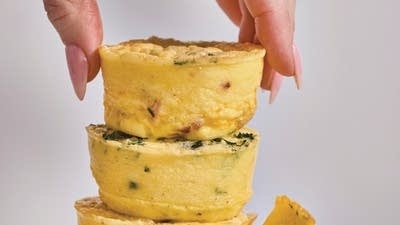
The original version of this recipe calls for cannellini beans, but any light-colored bean works. I wouldn’t recommend pinto beans or any other brown or red bean, though; the flavor is too dark and muddy here. And you’ll note that, if you use canned beans rather than beans cooked from dried, you’ll need to add some stock. I like chicken stock – though you could use vegetable, I’m sure – and in a pinch, Better Than Bouillon is more than adequate. Be sure to have some bread on hand when you serve this, and be sure to toast that bread and rub it with garlic. We usually keep the bread on the side, but you can also ladle the escarole and beans over it and let it get all nice and juicy and sogged. [Ed. Note: Recipe by Molly Wizenberg's Orangette blog, adapted from All About Braising by Molly Stevens.]
Ingredients
1 medium head escarole (about 1 pound; 450 grams)
1/4 cup (60 ml) olive oil
3 garlic cloves, thinly sliced
Pinch of red pepper flakes
Kosher salt
1 batch of white beans cooked according to these directions, OR about 2 ½ cups canned beans (a little less than two 15-ounce cans), drained and rinsed, plus 1 cup chicken stock
1/2 of a lemon
Great-tasting olive oil, for finishing
Grated Grana Padano or Parmesan, for finishing
Directions
Cut the head of escarole in half from root end to leaf tips. Working with one half at a time, starting at the leaf tips and working toward the root end, slice the escarole crosswise into roughly 1 1/2-inch strips. (Discard the little nub of root end when you get to it; it’s usually a little browned and dry.) Scoop the escarole into a salad spinner or large bowl, and add cold water to cover generously. Use your hands to swish the leaves around, rubbing with your thumb to loosen any stubborn dirt. Then let the escarole sit in the water undisturbed for a few minutes, to allow the dirt to fall to the bottom of the bowl. Lift the basket from the salad spinner (or lift handfuls of escarole from the bowl into a colander), and drain the water left in the bowl. Replace the basket (or put the escarole from the colander back into the bowl), and repeat the washing, swishing, and soaking. Escarole can be quite dirty, so I find it’s important to wash it twice. Then drain it, but don’t worry if they leaves are still a little wet; that will actually help with the braise.
Combine the oil, garlic, and red pepper flakes in a Dutch oven or large (12-inch) skillet with a lid. Place over medium heat. Warm just until the garlic becomes fragrant and barely golden around the edges, about 2 minutes. Do not allow the garlic to brown, or you’ll have to start over. Add the escarole a handful at a time, stirring and allowing it to wilt before adding the next handful. Add a pinch of salt with each handful. When all the escarole has wilted, spoon the beans and about 1 cup of their cooking liquid (or 1 cup chicken stock, if using canned beans) into the pot, season with a little more salt, and stir to incorporate. Bring to a gentle simmer. Cover, adjusting the heat to maintain a slow simmer, and cook until the greens are very tender and the cooking liquid has thickened somewhat from the starch in the beans, about 20 minutes.
At this point, the dish will be quite soupy. You can either serve it as-is, or, if you’d like it less soupy, remove the lid and boil for about 5 minutes to reduce the liquid. Season with a generous squeeze of fresh lemon juice and more salt and pepper to taste. Serve warm or at room temperature, with good olive oil and grated Grana Padano or Parmesan on top.
Recipe reprinted with permission from Molly Wizenberg's Orangette blog post, as adapted from All About Braising by Molly Stevens.
Before you go...
Each week, The Splendid Table brings you stories that expand your world view, inspire you to try something new, and show how food connects us all. We rely on your generous support. For as little as $5 a month, you can have a lasting impact on The Splendid Table. And, when you donate, you’ll join a community of like-minded individuals who love good food, good conversation, and kitchen companionship. Show your love for The Splendid Table with a gift today.
Thank you for your support.
Donate today for as little as $5.00 a month. Your gift only takes a few minutes and has a lasting impact on The Splendid Table and you'll be welcomed into The Splendid Table Co-op.




